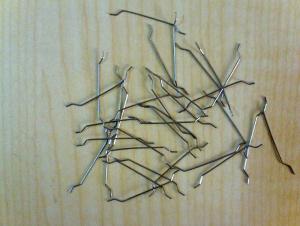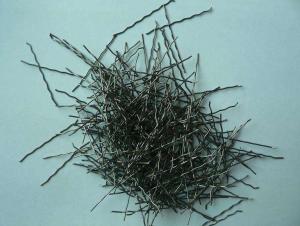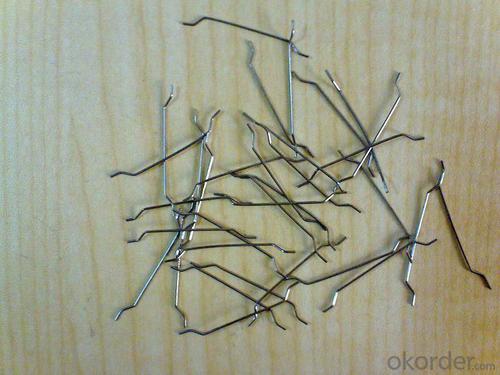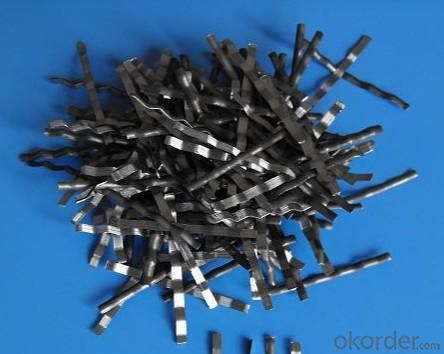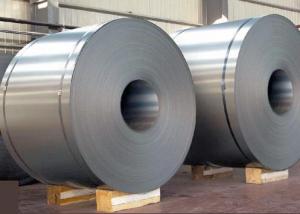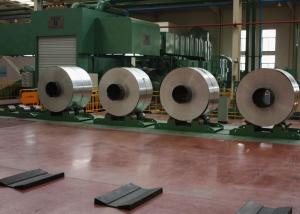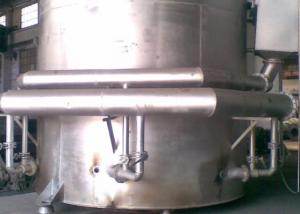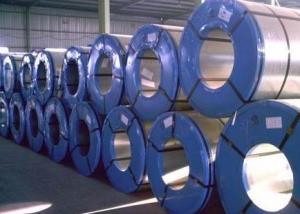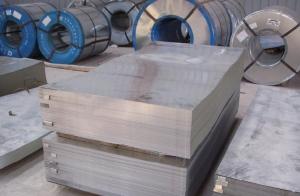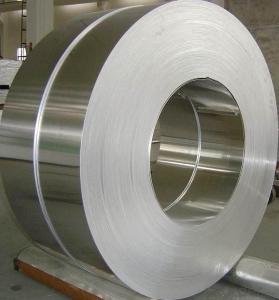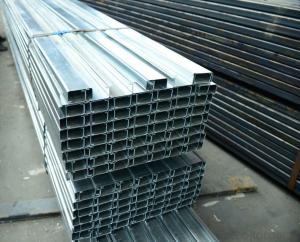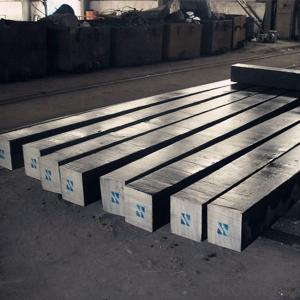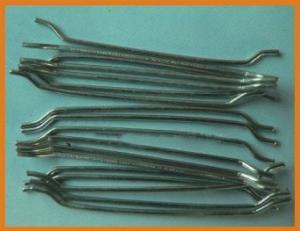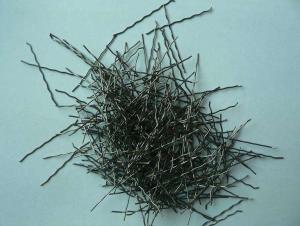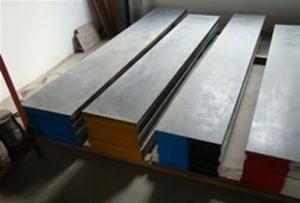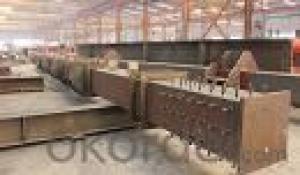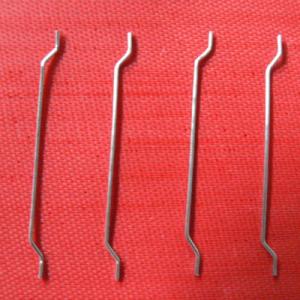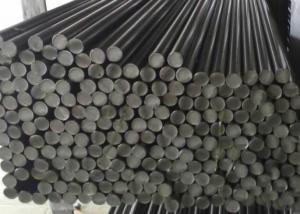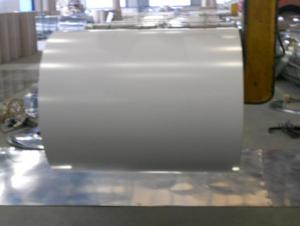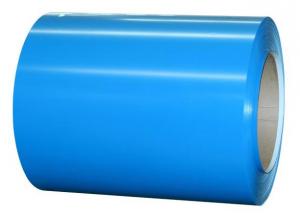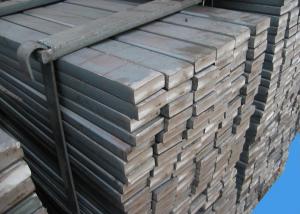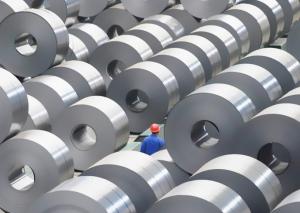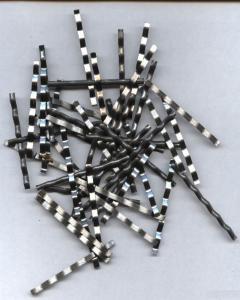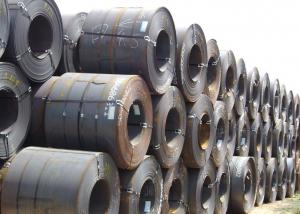Good Quality Steel Fiber
- Loading Port:
- Guangzhou Port
- Payment Terms:
- TT or L/C
- Min Order Qty:
- 5 Tons m.t.
- Supply Capability:
- 50000000 Tons Per Year m.t./month
OKorder Service Pledge
OKorder Financial Service
You Might Also Like
Technical Superiority of Good Quality Steel Fiber:
1. High in flexural strength, shear resistance & anti permeability.
2. Low in shrinkage degree, thus effectively preventing shrinkage cracks.
3. Excellent in ductility.
4. High in early strength times increase in impact resistance and fatigue resistance.
5. Good in workability,hence uniform distribution in concrete without balling during mixing and free from exposure after placing.
6.concrete thickness reduced without affecting its strength, hence a cut in concrete consumption by 20-30%.
7.rebar partly or completely omitted.
8.a small dosage with 0.35% as the smallest and 0.4-0.8 as normal range.
9.construction cycle shortened by 25%, suitable for projects where continuous and fast concrete placing is required, such as ports, airports, tunnels, reservoirs and industrial floors.
10.the same applied for conventional concrete mixing & placing without addition of other equipment.
Wave Steel Fiber(Mill Cut Steel Fiber)
Technological Specification of Good Quality Steel Fiber:
length:30-50mm
Tensile Strength: ≥700Mpa
Packing:20KG/Carton , 20KG/Bag , or according to your requirement.
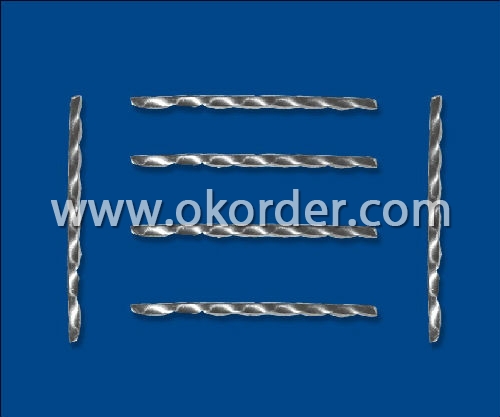
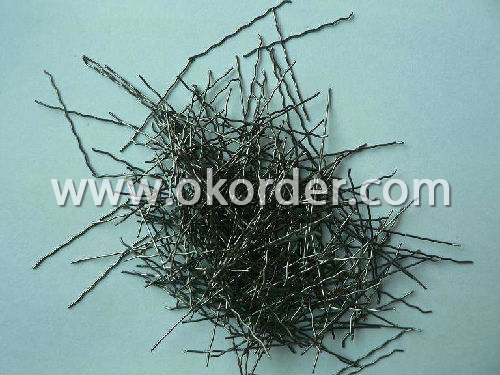
- Q: How do steel products contribute to the hospitality and tourism industry?
- Steel products contribute to the hospitality and tourism industry in various ways. Firstly, steel is an essential material for constructing hotels, resorts, and other hospitality establishments. Its strength, durability, and versatility make it ideal for creating sturdy and aesthetically pleasing structures that can withstand the demands of the industry. From the framing of the building to the interior fixtures and fittings, steel is used extensively, ensuring the safety and comfort of guests. Moreover, steel is used in the manufacturing of furniture, appliances, and amenities found in hotels and resorts. From beds, chairs, and tables to kitchen equipment, steel provides a reliable and long-lasting solution. Its corrosion resistance and easy maintenance make it an excellent choice for furnishings and equipment that can withstand the high usage and frequent cleaning requirements of the hospitality industry. Additionally, steel is crucial for the development of tourist attractions and infrastructure. From iconic landmarks and observation decks to bridges, railways, and transportation systems, steel plays a significant role in creating and maintaining tourist destinations. Its structural capabilities enable the construction of impressive architectural wonders and transportation networks that enhance the accessibility and appeal of tourism sites. In summary, steel products contribute significantly to the hospitality and tourism industry by providing durable and aesthetically pleasing infrastructure, reliable furnishings and equipment, and enabling the development of tourist attractions. Its strength, versatility, and low maintenance requirements make it an essential material that supports the growth and success of the industry.
- Q: What are the different types of steel roofing materials?
- There are several types of steel roofing materials available, including galvanized steel, galvalume steel, zincalume steel, and stainless steel. Each type offers different properties and advantages, such as corrosion resistance, durability, and aesthetic appeal.
- Q: How do steel products contribute to the construction of theme-based adventure parks?
- Steel products play a crucial role in the construction of theme-based adventure parks due to their strength, durability, and versatility. Steel is used in the framework and support structures of roller coasters, water slides, and other thrill rides, ensuring the safety and stability of these attractions. Additionally, steel is used in the fabrication of various park fixtures, such as entrance arches, railings, and signage, adding to the theme and aesthetics of the park. Overall, steel products provide the necessary infrastructure and creative elements that make theme-based adventure parks exciting and visually appealing.
- Q: What are the advantages of using steel products in construction?
- There are several advantages of using steel products in construction. Firstly, steel is known for its exceptional strength and durability, making it a reliable choice for constructing buildings, bridges, and other structures. It can withstand harsh weather conditions, earthquakes, and fire, ensuring the safety of the occupants. Secondly, steel is highly versatile and can be easily molded into various shapes and sizes, allowing for flexibility in design and construction. Additionally, steel is a sustainable material as it can be recycled, reducing the environmental impact of construction projects. Lastly, steel offers cost-effectiveness in the long run as it requires minimal maintenance and has a longer lifespan compared to other materials.
- Q: How is steel plate cut using CNC machines for fabrication?
- Steel plate is cut using CNC machines for fabrication through a process called plasma cutting or laser cutting. In plasma cutting, an electrically conductive gas is passed through a nozzle at high speeds, creating a plasma arc that melts and blows away the metal. Laser cutting, on the other hand, uses a high-powered laser beam to melt and vaporize the steel plate, resulting in precise and clean cuts. Both methods are controlled by CNC machines, which follow programmed instructions to accurately cut the steel plate into desired shapes and sizes.
- Q: What are the different types of steel sheet and their uses?
- There are various types of steel sheets available, each with unique characteristics and applications. Some common types include hot-rolled steel sheets, cold-rolled steel sheets, galvanized steel sheets, and stainless steel sheets. Hot-rolled sheets are ideal for structural components, while cold-rolled sheets are used for more precise and finished products. Galvanized sheets provide corrosion resistance and are commonly used in outdoor applications. Stainless steel sheets are highly durable, resistant to corrosion, and find uses in industries such as construction, automotive, and food processing.
- Q: How is steel used in the construction of power plants?
- Steel is extensively used in the construction of power plants for its exceptional strength, durability, and resistance to extreme temperatures. It is used in various applications such as structural frameworks, support beams, and columns, as well as in the fabrication of boilers, pressure vessels, and turbine components. Additionally, steel is crucial for the construction of transmission towers and electrical infrastructure within power plants. Overall, steel plays a vital role in ensuring the structural integrity and efficient functioning of power plants.
- Q: What are the different types of steel roofing systems?
- There are several different types of steel roofing systems available, including standing seam, corrugated, and stone-coated steel. Each type offers its own unique benefits and aesthetic appeal.
- Q: What are the common types of steel products used in the fashion and apparel industry?
- Some common types of steel products used in the fashion and apparel industry include steel zippers, steel buttons, steel buckles, steel eyelets, and steel hooks. These steel products provide durability and a sleek aesthetic to clothing and accessories.
- Q: How does steel compare to other materials like aluminum or wood?
- Steel is generally stronger and more durable than both aluminum and wood. It has a higher tensile strength, making it better suited for structural applications. Steel is also more resistant to fire, pests, and rotting compared to wood. On the other hand, aluminum is lighter and more corrosion-resistant than steel, making it preferable for certain applications like aerospace or marine industries. Ultimately, the choice between steel, aluminum, or wood depends on the specific requirements and characteristics needed for a particular project.
1. Manufacturer Overview
| Location | Tianjin, China |
| Year Established | 2001 |
| Annual Output Value | Above US$ 10 Million |
| Main Markets | 20.00% North America 15.00% South America 15.00% Eastern Europe 10.00% Southeast Asia 10.00% Northern Europe 10.00% South Asia 10.00% Western Europe 5.00% Africa 5.00% Mid East |
| Company Certifications | ISO9001:2000;ISO14001:2004 |
2. Manufacturer Certificates
| a) Certification Name | |
| Range | |
| Reference | |
| Validity Period |
3. Manufacturer Capability
| a) Trade Capacity | |
| Nearest Port | Tianjin Port |
| Export Percentage | 41% - 50% |
| No.of Employees in Trade Department | 6-10 People |
| Language Spoken: | English; Chinese; |
| b) Factory Information | |
| Factory Size: | Above 30,000 square meters |
| No. of Production Lines | Above 10 |
| Contract Manufacturing | Design Service Offered; Buyer Label Offered |
| Product Price Range | High; Average |
Send your message to us
Good Quality Steel Fiber
- Loading Port:
- Guangzhou Port
- Payment Terms:
- TT or L/C
- Min Order Qty:
- 5 Tons m.t.
- Supply Capability:
- 50000000 Tons Per Year m.t./month
OKorder Service Pledge
OKorder Financial Service
Similar products
Hot products
Hot Searches
Related keywords
